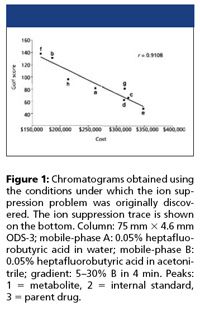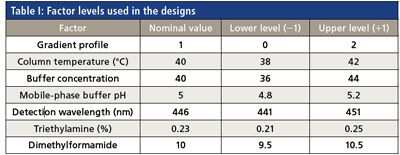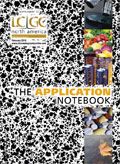Call for Application Notes
LCGC is planning to publish the next issue of The Application Notebook special supplement in June.
LCGC is planning to publish the next issue of The Application Notebook special supplement in June. The publication will include vendor application notes that describe techniques and applications of all forms of chromatography and capillary electrophoresis that are of immediate interest to users in industry, academia, and government. If your company is interested in participating in these special supplements, contact:
Michael J. Tessalone, Group Publisher, (732) 346-3016
Edward Fantuzzi, Associate Publisher, (732) 346-3015
Stephanie Shaffer, East Coast Sales Manager, (508) 481-5885
Application Note Preparation
It is important that each company’s material fits within the allotted space. The editors cannot be responsible for substantial editing or handling of application notes that deviate from the following guidelines: Each application note page should be no more than 500 words in length and should followthe following format.
Format
• Title: short, specific, and clear
• Abstract: brief, one- or two-sentenceabstract
• Introduction
• Experimental Conditions
• Results
• Conclusions
• References
• Two graphic elements: one is the companylogo; the other may be a sample chromatogram,figure, or table
• The company’s full mailing address, telephonenumber, fax number, and Internetaddress
All text will be published in accordance withLCGC’s style to maintain uniformity throughoutthe book. It also will be checked for grammaticalaccuracy, although the content willnot be edited. Text should be sent in electronicformat, preferably using Microsoft Word.
Figures
Refer to photographs, line drawings, andgraphs in the text using arabic numerals inconsecutive order (Figure 1, etc.). Companylogos, line drawings, graphs, and charts mustbe professionally rendered and submitted as .TIF or .EPS files with a minimum resolutionof 300 dpi. Lines of chromatograms must beheavy enough to remain legible after reduction.Provide peak labels and identification.Provide figure captions as part of the text,each identified by its proper number and title.If you wish to submit a figure or chromatogram,please follow the format of the sampleprovided below.

Tables
Each table should be typed as part of the maintext document. Refer to tables in the text byroman numerals in consecutive order (TableI, etc.). Every table and each column withinthe table must have an appropriate heading.Table number and title must be placed in acontinuous heading above the data presented.If you wish to submit a table, please followthe format of the sample provided below.

References
Literature citations must be indicated by arabicnumerals in parentheses. List cited referencesat the end in the order of their appearance.Use the following format for references:(1) T.L. Einmann and C. Champaign, Science387, 922–930 (1981).
The deadline for submitting application notes for the June issueof The Application Notebook is: April 28, 2010.

Silvia Radenkovic on Her Research and Passion for Scientific Collaboration
April 3rd 2025Radenkovic is a PhD candidate at KU Leuven and a member of FeMS. Her research focuses on inborn metabolic disorders (IMD), like congenital disorders of glycosylation (CDG), omics techniques such as tracer metabolomics, and different disease models.
Evaluating Natural Preservatives for Meat Products with Gas and Liquid Chromatography
April 1st 2025A study in Food Science & Nutrition evaluated the antioxidant and preservative effects of Epilobium angustifolium extract on beef burgers, finding that the extract influenced physicochemical properties, color stability, and lipid oxidation, with higher concentrations showing a prooxidant effect.



















